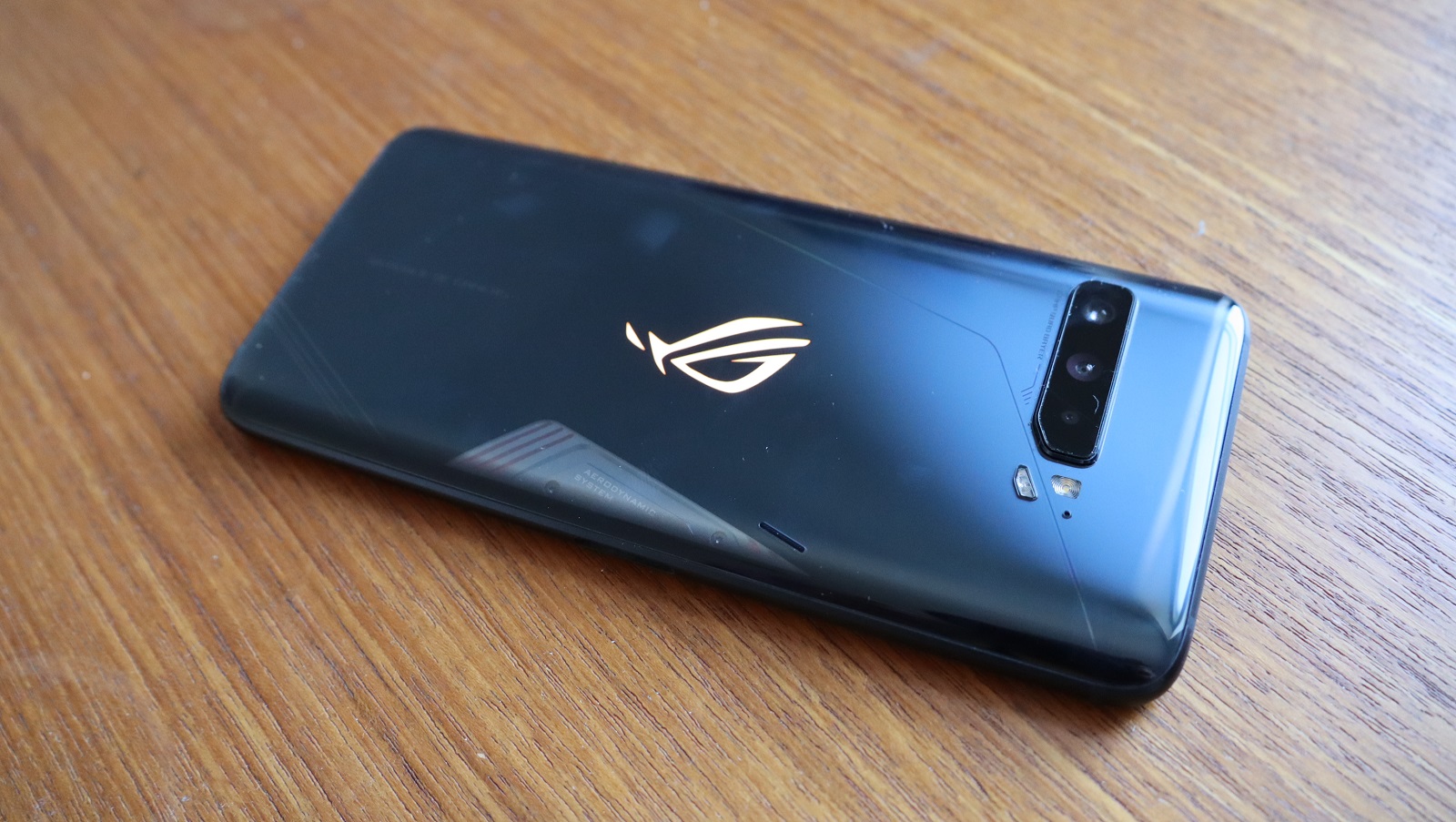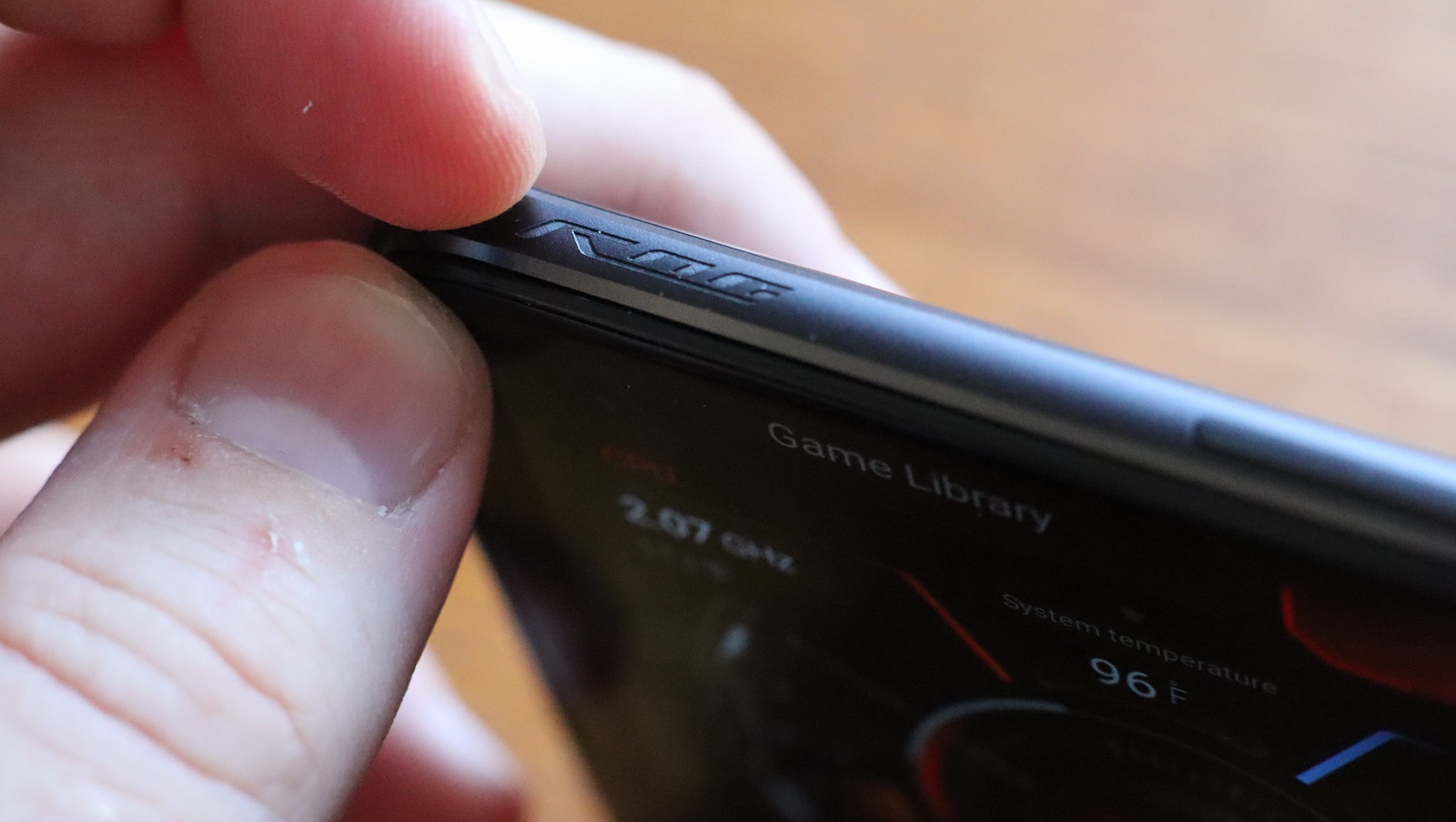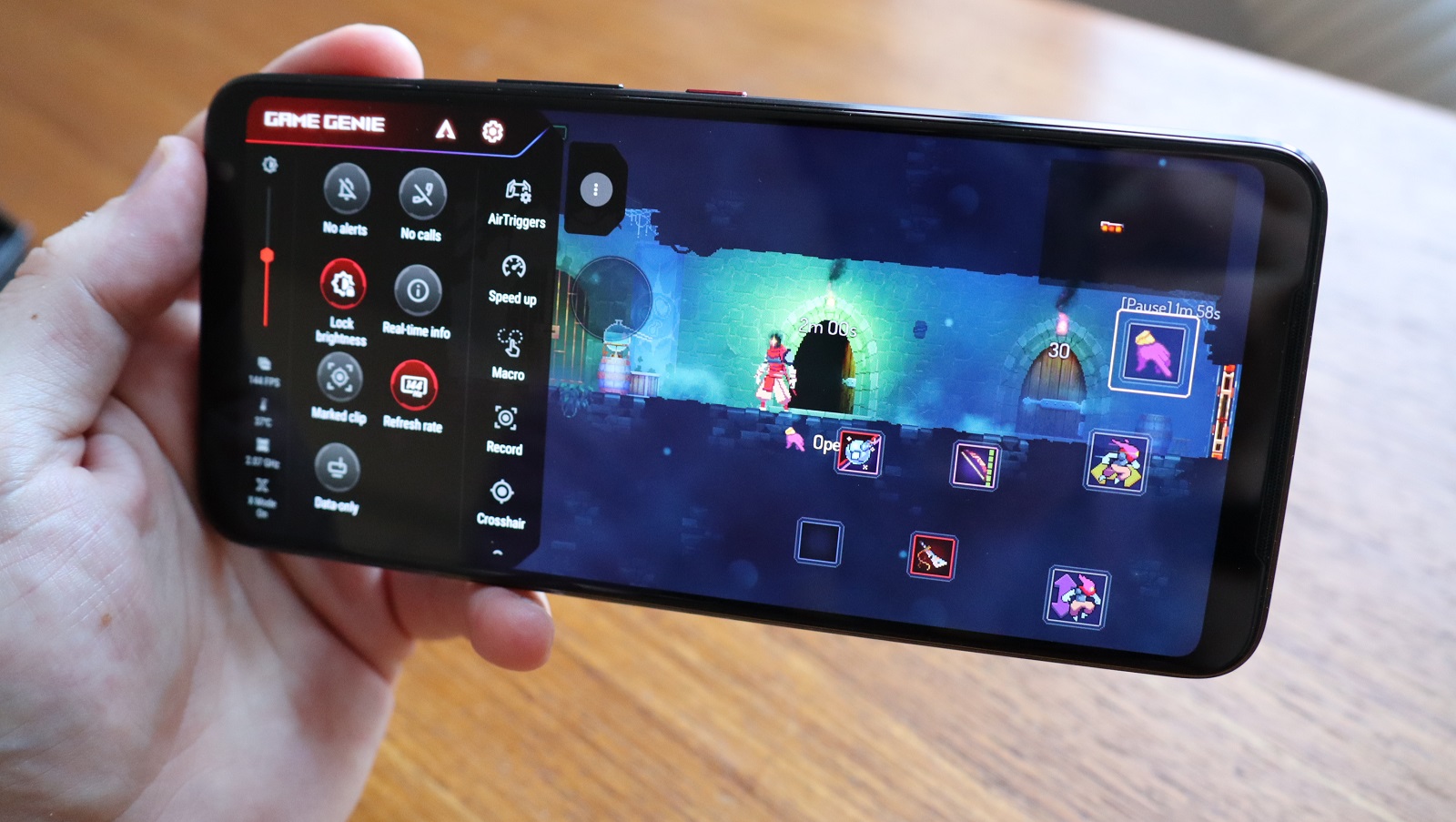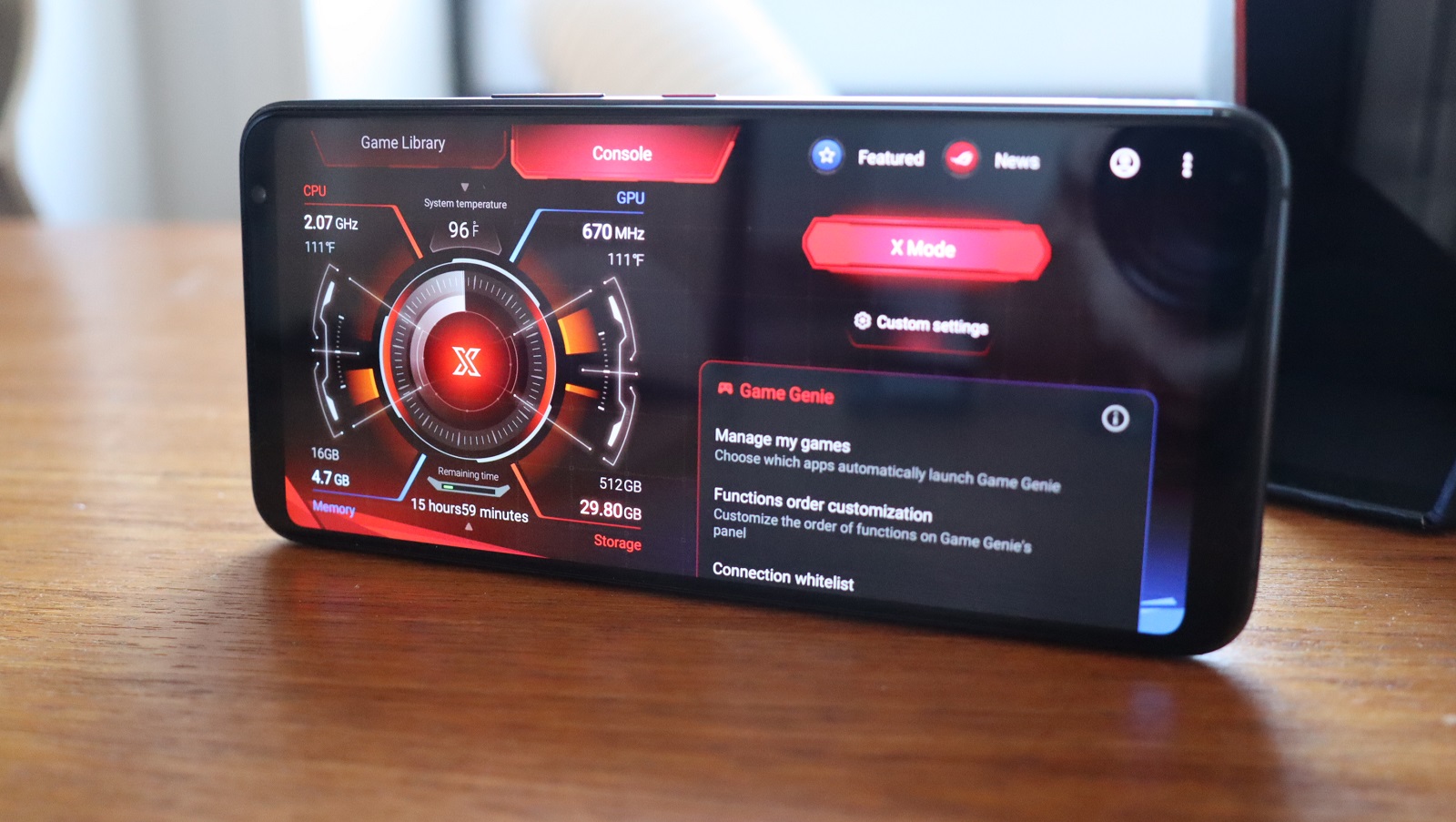The Asus ROG Phone 3 is the latest in a series of phones that pack the most cutting-edge specs to deliver a premium experience at high prices. This is against the trend of a gaming phone market swelling with more affordable mid-range smartphones, as well as flagship phones getting more and more advanced.
How does Asus believe the ROG Phone 3 stand out? By offering the best experience and listening to fans. That's according to Asus executives, who sat down to chat with TechRadar about the ROG 3’s place in the 2020 phones market – and how the company tweaked its design to appeal to more than just hardcore gamers.
The first thing to notice about the ROG 3 is that it’s literally the same size and weight as its predecessor, but the look has slightly changed. The back cover, which had been criss-crossed by aggressive angles in the ‘gamer chic’ style, is now a clean back with far fewer lines and jagged edges.
Indeed, its biggest single distinguishing feature is a modest window to the heat sink – a hint at the gaming power inside, rather than a visible declaration of it being a gaming device.

“If you look at it now, this generation is a little bit more subdued compared to the [ROG II], and some people feel that is a negative, and some people feel it’s a nice thing,” explained Chih-Hao Kung, global technical PR director for Asus’ mobile business unit.
“How do we balance these two wheels, because they are so opposite to each other? Do we lean very heavily on stereotypically gaming aesthetics or do we try to make it more appealing to a wider audience?”
The subdued design Asus settled on was modeled after souped-up ‘supercars,’ Kung explained. The inspiration is obvious, with the heat sink window resembling the transparent cowls covering high-octane engines on the world’s fastest automobiles.
It certainly feels like a design shift for more mainstream appeal, yet it still suggests serious gaming capability under the hood – and the ROG 3 has more phone-equivalent horsepower than nearly any other handset out there.
It’s one of the first to sport the Qualcomm Snapdragon 865 Plus chipset (achieving 10% better performance than the standard Snapdragon 865, according to Asus), packs an industry-leading 16GB of LPDDR5 RAM, and its OLED display’s refresh rate has been increased to 144Hz compared to the ROG II’s 120Hz screen.
In our experience, those specs make for some of the smoothest gaming we’ve ever had on a phone without a moment of slowdown. But appealing to both the hardcore gamers that make up Asus’ traditional market and the more casual phone fans introduces new challenges.

A more mainstream gaming phone
There are things hardcore gamers understand that casual players, who may be new to performance hardware, do not. For instance, heat buildup on the back of the phone can seem like the phone is working improperly.
“So internally, we had a lot of debate: should we make more isolated material to keep the heat inside, or should we let the heat dissipate outside?” said Shawn Chang, global sales and marketing director of Asus’ mobile business unit.
“We still believed in the end that the user would like to have performance… the whole concept is that we wanted to make a supercar that looks like a supercar and performs like a supercar, but you can turn it off.”
Thus, the Asus ROG 3 hides some of its more intense heat and performance until users activate X Mode, the signature Asus ROG phone mode that enables particular tinkering of CPU, GPU, heat, and network settings. While Asus simplified some of those aspects to make it easier for newcomers to customize their gaming experience, it’s still a complex list.
This is the line in the sand that Asus is drawing: accommodating casual gamers, but preserving complexity to provide a premium experience for gamers who want to push limits. And it packs the biggest and best components to do so – often to a redundant degree, considering the phone has four Wi-Fi antennas and four microphones.

Selling top-tier phones in a mid-range gaming market
The extensive range of top-tier specs puts the ROG 3 somewhat at odds with other, cheaper gaming smartphones. In a market where mid-range handsets are half the cost of the ROG 3, there are clear differences.
“What is their build quality? Are they really using glass on the front and back? Do you put a 30W charger in the box? How many frequency bands do they support worldwide? Do they support 5G across continents?”, Kung asks. “If you go for a lower price, you sacrifice these things. Which is fine – there’s [just] different ways to approach it.”
There’s no denying the clash of value as cheaper phones flood the market, and Asus was coy about outright stating how they could be sold at such low prices – about, perhaps, the disparity in production scale between the Taiwan-based Asus and other massive manufacturers.

Faced with that competition, the ROG 2 seems a success story that paved the way for the ROG 3. It’s not the only pricey gaming phone out there – the Lenovo Legion Phone Duel launched the same day as Asus’ new phone, and one configuration of the Xiaomi Black Shark 3 has arrived – but the company believes the extensive features and tooled software keep it surviving and thriving where the Razer Phone line failed.
“Why did the Razer fail when the ROG phone didn’t? Well, maybe that’s not up to us to know,” Kung said. “I would say the ROG phone is not a ZenFone or a standard flagship phone painted black with a light on it.”
Surviving in the gaming smartphone niche requires savvy choices, too. If you just listen to fans arguing on forums, you’d think the only things they care about are cameras and who gets to 200-watt fast charging first, Kung says. But that’s not what everybody wants, even if it sometimes feels like that.
Asus isn’t gunning to convince folks to replace their Samsung Galaxy S20 with a new ROG Phone 3. Reading between the lines, they’ve ceded photography to the biggest flagship phones.
When 1.23 billion smartphones were sold last year, Asus’ team believes there’s a niche for high-end gaming handsets, and positive sales prove it.
“We have a ROG 3 because the first and second one did well. That’s the simple answer,” Kung said. “We can make it sustainable so far, and we do see demand increasing for every model. If anything, we were surprised by how fast inventories were depleting.”
- These are the best gaming phones right now

No comments:
Post a Comment